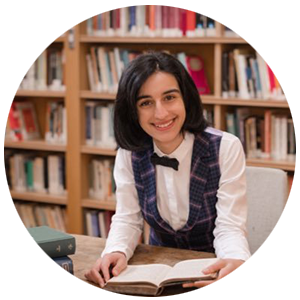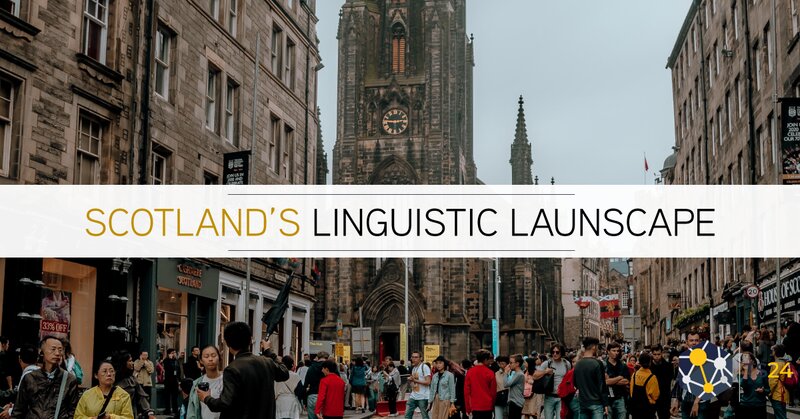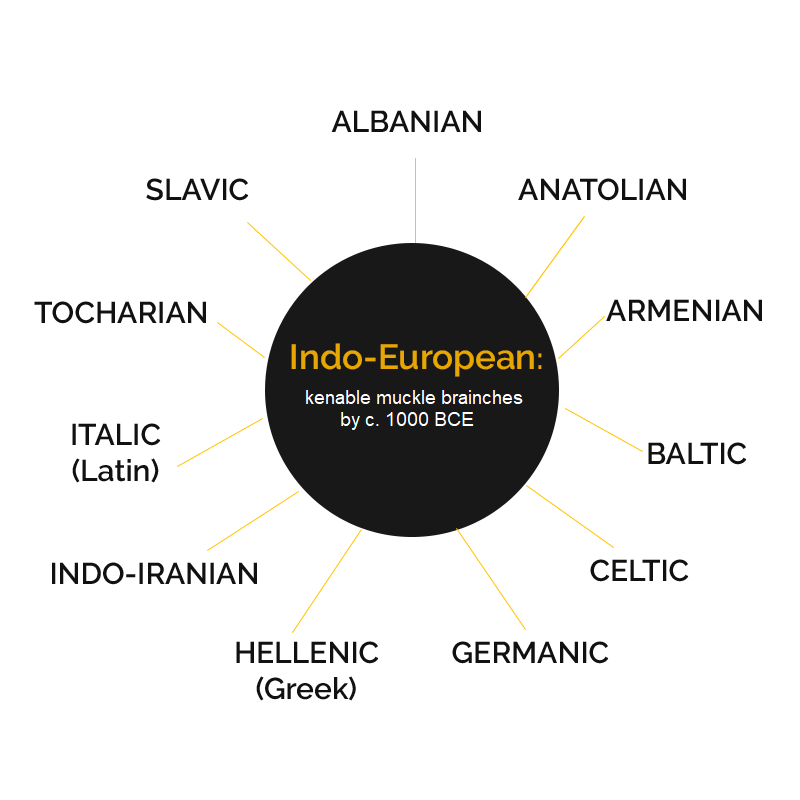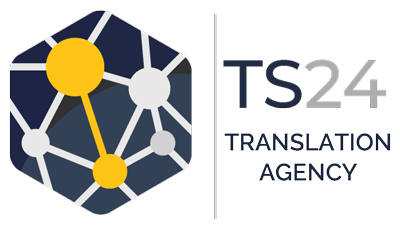Today, Translation Services 24 are fortunate to welcome a guest article written by Ashley Douglas. Ashley is an Edinburgh-based researcher, writer, and translator working in Scots, Gaelic, Danish, and German. She specialises in Scots original research, writing, translation, style guide and glossary development as well as talks & consultancy. Her areas of special interest include Scottish history and archaeology, politics, linguistics, and LGBT history.
This article is written in Scots. For the English version, visit here.
You can follow Ashley on her on Twitter or by visiting her website here. Enjoy!

Scotland’s Linguistic Launscape - Scots and Gaelic
In a foregane airticle, we brocht some licht tae the whiles dumfoonerin differences atween Scots and Scottish Staunart English. The relationship atween Scots and Gaelic is anither aspeck o the rowth o Scotland’s linguistic launscape that can lea fowk a wee bit bumbazed.
In this airticle, we’ll gang intae the differences atween the twa as weel as their sibness - takkin a glisk at history and politics forby linguistics.

Leid Faimily
In linguistic terms, Scots and Gaelic belang tae twa halely different leid faimilies - Germanic on the ae haun, and Celtic on the tither. These are sindry brainches o a myntit at common ancestor leid cried Indo-European. Fae aboot the first millennium BCE, this had sindert oot intae a wheen kenable brainches.

Ilka leid haein its roots in sindry linguistic brainches that gaed awa fae yin anither monie thoosans o years syne, it should conflummix naebodie that Scots and Gaelic are, whan it comes doon tae it, kenably sindry leids. Ye cannae mix the twa up, e’en gin ye did yer best tae. Tak a glisk at the twa exemple sentences ablow.
Gaelic and Scots is baith leids that is spak in Scotland
Tha an dà chuid Gàidhlig agus Albais nan cànanan a tha gam bruidhinn ann an Alba.
(Gaelic and Scots are both languages that are spoken in Scotland)
The muckle difference atween the twa is ayont doot clear. Hooivver, lat’s hae a deek at twa-three hings. The Gaelic sentence sterts wi the verb (fur it is a verb initial leid) while the Scots ane sterts wi the subjeck. Turnin tae the wird-kist o the leids, we can compare leids vs cànanan or spak vs bruidhinn. The hale biggin o ilka sentence, forby the wirds yaised fur tae big it, are unjoukably distinct.
Scots is a West Germanic leid. It is kin wi English forby ither West Germanic leids sic as German and Dutch, and North Germanic leids sic as Danish, Swedish and Norwegian. Its roots gang back tae a northern dialect o Auld English/Anglo-Saxon. It syne growed intae a leid o Scotland - in linguistic forby scrieverly, institutional and political terms - in line wi Scotland’s development intae a medieval nation state.
Scottish Gaelic (Gàidhlig) is a Q-Celtic leid. It is closely relatit tae the ither modern Q-Celtic - or Goidelic or Gaelic - Celtic leids o Irish (Gaeilge) and Manx (Gaelg). Tak tent o hoo the terms that thir leids yaise fur tae refer tae theirsels - their endonyms - aw stem fae the ae root. Gaelic wis the leid o the early medieval Scottish kinrick o Alba.
Anither Celtic leid group is makkit up o the modern P-Celtic - or Brythonic or Brittonic - leids o Welsh, Breton and Cornish. Speikers o P-Celtic and Q-Celtic leids dinnae mutually unnerstaun yin anither. Although mair closely relatit tae yin anither nor tae P-Celtic leids, the degree o mutual unnerstaunin atween the modern Q-Celtic leids maunna be makkit ower muckle o either.
Linguistic Sibness
Although they’ve cam doon tae us fae halely different leid faimilies, there is naetheless exemples o linguistic sibness atween these twa tongues o Scotland. Forby a kenable hantle o shared wirds, they can aft echo yin anither in ither ways anaw.
Lat’s tak a glisk at a wheen exemples.
Wird-kist
Monie wirds hae dootless stravaiged fae Gaelic intae Scots, amang thaim some o the maist kenspeckle o Scottish wirds sic as whisky (fae uisge-beatha), glen (fae gleann) and ben (fae beinn) as weel as loch, ceilidh, cairn, crag and sporran. Aw thir wirds come fae Gaelic, and are pairt o the English spak in Scotland forby.
Ither wirds hae gaed the ither wey, fae Scots intae Gaelic. Amang thaim is the wird aidh, the scrievin doon in Gaelic orthography o yin o the best-kent Scots wirds oot there: aye, which stems fae Germanic roots. Anither exemple o a Germanic-won wird in Gaelic is briogais: fae Scots breeks, meanin troosers.
Ither wirds kythe in baith leids, but it’s fykie tae pin doon whither they gaed fae Scots tae Gaelic, or Gaelic tae Scots; or, indeed, whither baith cam intae bein in their ain freestaunin wey but fae a shared root. This group taks in wirds sic as Scots boorach and Gaelic bùrach. Baith thir wirds hae, in fack, kythit in the Official Report o the Scottish Pairliament, wi Gaelic or Scots orthography dependin on the context.
It is wirth takkin tent forby o the Gaelic wird Sasannach, which has stravaiged intae Scots and Scottish English but taen on scunnersome connotations alang the wey, and is aft yaised fur tae ding a bodie doon. In Gaelic, the wird has nae siclike negative baggage and is nae mair and nae less nor an adjective or noun relatin tae Sasainn, the wird fur England.
In ither cases, it’s less aboot shared wird-kist per se nor the ease o idomatic flittin atween the twa leids. Fur exemple, on lairnin the Gaelic seyin tha mo cheann na bhrochan (“my head is porridge”), the Scots speiker willnae miss a beat in owersettin tae ma heid’s aw mince. Nae sic richt-oot perfit English owersettin lowps tae mind; the English leid wid vyce the sentiment in a halely different wey. Siblike, whaur it can be fykie tae owerset the Scots term shooglie intae a guid yin-wird English equivalent, fur the Gaelic speiker, owersettin it tae cugallach feels natural.
Syntax
Definite Airticle
First o aw, Scots and Gaelic baith yaise the definite airticle kenably mair in relation tae baith adverbs o time and wi nouns.
They are at the schuil the noo
Tha iad anns an sgoil an-dràsta
They are at [-] school [-] now
In the exemple abuin, Gaelic and Scots baith define the school / an sgoil forby yaisin the definite airticle afore the time adverb (the noo / an-drásta).
The Scots and Gaelic fur “today” and “tomorrow” hae a siblike definitive feel, which isnae present in the English:
the morra, the day
a-màireach, an-diugh
tomorrow, today
Forby, Scots and Gaelic yaise the definite airticle in relation tae leids in a wey that English doesnae. Fur exemple, Scots refers tae speikin “the Doric” or “the Gaelic” or tae a bodie studyin “the German”. In siblike mainner, Gaelic refers tae itsel in a wheen contexts as “the Gaelic” (a’ Ghàidhlig) and tae English, fur exemple, as “the English”; e.g. anns a’ Bheurla” = “in (the) English”.
Preposition Drapoot
In anither case, hooivver, Scots and Gaelic staun thegither fur baith lackin a featur present in English; namely, the preposition “of”. Fur exemple, compare Gaelic “beagan uisge” and Scots “a bit watter” wi English “a bit of water”.
Singular Nouns
Baith Gaelic and Scots yaise singular nouns in certain contexts whaur plurals are fordert in English.
Gaelic: trì bliadhna
Scots: three year
English: three years
(Tak tent: Gaelic bliadhna is the singular form o “year”. The plural form wid be bliadhnaichean).
Reflexive Pronoons
Baith Scots and Gaelic yaise the reflexive pronoon forms faur mair widely and freely nor in English.
It's yersel
Thu fhèin a th’ ann
It’s you
Hoo’s yersel?
Ciamar a tha thu fhèin?
How are you?
Saicont Person Plural Pronoon
Baith Scots and Gaelic hae a saicont person plural pronoon; as, indeed, dae the muckle majority o European leids. English is wioot doot the odd yin oot in no haein yin. Compare Gaelic thu (singular) and sibh (plural) and Scots you/ye (singular) and youse (plural) wi English you (singular) and you (plural), which are the sel-same.
Phonology
The phonemic inventories (the soonds) o Scots and Gaelic happen tae share the kenable fricative “ch” soond that lowps tae mind whan thinkin aboot the speech o Scotland, includin the English spak in Scotland.
This means that this soond is gey easy fur speikers o Scots, Gaelic and Scottish English tae mak, whauras English speikers elsewhaur are no likely tae hae the [x] (the phonetic symbol fur “ch”) soond in their inventory.
This applies tae the [x] soond makkit efter whit are kent as braid or back vowels (sic as in loch) as weel as tae the [ç] soond (an allophone) makkit efter sae-cawed slender or front vowels (sic as in dreich).
Gin ye can weel pronoonce they soonds and ye read oot thir wirds, ye will lug-in tae a subtle difference in the quality o the “ch” soond dependin on the sort o vowel afore it: this is acause [x] is a voiceless velar fricative while [ç] is a voiceless palatal fricative.
Gaelic speikers hae nae bother at aw wi pronooncin Scots wirds sic as dreich, trauchle, thocht, broch, brocht and eicht, and it is nae trauchle fur Scots speikers tae pronoonce the “ch” soond that kythes in coontless Gaelic wirds, fae loch and smaoineachadh tae ach and deich.
The place kent in English as Burghead is kent in Scots as Burgheid or, mair aft, The Broch. In Gaelic, the place is cried Am Broch. It is straichtforrit fur a Scots or Gaelic speiker tae flit atween The Broch and Am Broch, dependin which tongue o Scotland they are speikin. It is less straichtforrit fur a speiker o English whae hasnae maistert the “ch” soond tae yaise either the Scots or Gaelic term wioot trauchle.
(Tak tent that anither Scottish toon, Fraserburgh, is kent locally as The Broch anaw).
Thochts
Clearly, whan it comes doon tae it, Scots and Gaelic are gey sindry leids. Hooivver, we cannae no tak tent o a wheen affinities in their syntax, phonology and sentiment, as weel as their wird-kist.
E’en gin we alloo fur some aspecks tae hae arisen fae sindry roots - fur coincidence raither nor influence at first - it doesnae seem ower muckle a lowp tae threap that their presence in baith Scots and Gaelic micht weel uphaud and forder thaim in yin anither, like a linguistic keekin-gless.
Meanwhile, ither aspecks seem tae refleck, tae flittin degrees, the centuries o co-bidin o Scots and Gaelic speikers in Scotland and the mutual influence they have hud on yin anither’s leid and warld views.
Siccarly, there’s nae doot that, fur the Scots speiker learnin the Gaelic, or the Gaelic speiker learnin the Scots, there’s faur warse places tae stert fae.
This pairt o Scotland’s linguistic launscape hasnae been luikit intae eneuch. We’re needin mair study baith synchronically (intae whit Scots and Gaelic are like the day) and diachronically (intae whit wey they cam tae be thon wey and whit they wis like aforesyne).
Forby, specific dialects o Scots will hae mair and sindry affinities wi Gaelic, dependin on their particular historical backgrund and geography. The author luiks forrit tae mair research, learnin and discussion on aw the abuin.
Terminology
Monie centuries syne, the Gaelic spak in Scotland wis referrit tae as lingua Scotica, lingua Scotorum and Scottis. Thon is tae sey, it was cried the leid o the Scoti or Scots, efter the term yaised by the Romans fur tae descrieve early Gaelic-speikin fowks - or Gaels.
Lowpin forrit a wheen centuries, by the 1500s, this leid o “the Scots” wis noo cried Ersch, Ersche, Eirse or Erse, aw o which are historical Scots leid terms fur “Irish”. This reflectit the lang-staunin view that Gaelic wis brocht tae Scotland fae Ireland, although this nairrative is threapit amang archaeologists and historians the day.
Nane o thir terms are noo yaised fur tae descrieve the Gaelic spak in Scotland. In Scottish English and Scots, it is cried Scottish Gaelic, Gaelic or the Gaelic - thon are its exonyms. In Gaelic itsel, it is cried Gàidhlig - thon is its endonym.
It is o muckle importance tae tak tent o the preferrit pronoonciation o Gaelic and Gàidhlig as GAH-lik [/ˈɡælɪk/] in Scotland - and no GAY-lik [/ˈɡeɪlɪk/], which refers tae the Gaelic spak in Ireland.
Meanwhile, until aboot the 15th century, Scots wis maist commonly cried Inglis. Thon is tae sey, it was referrit tae as “English” or the “speech o the Angles”. This tribe arrivit in sooth-east Scotland aboot 600 AD, bringin wi thaim the Germanic soonds and wirds that wid gang on tae develop intae the Scots leid in Scotland.
In the medieval period, hooivver, Scots speikers stertit tae refer tae their leid as Scottis insteid o Inglis. This flit taen place in line wi an aye mair strang sense o Scottish naitional identity in a medieval Scotland whaur Scots wis the maist weel-forrit leid. As notit abuin, at the ae time as “Scottis” cam tae apply tae Germanic Scots, it wis drappit fur Celtic Gaelic, which began tae be referrit tae wi oot-haudin and fremmit-makkin Scots wirds meanin “Irish”.
The modern term Scots comes fae the medieval Scots term Scottis.
The day, Scots is referrit tae in English as Scots, Lowland Scots or Broad Scots. In Scots itsel, it is aft cried the Scots leid. Lallans is anither Scots endonym fur tae refer tae Scots, although it is mair scrieverly, as is Braid Scots.
Forby, ye will aft lug-in tae fowk makkin reference tae distinct dialects o the Scots leid, fae Doric and Glaswegian tae Dundonian and Orcadian. Tak tent that, aforesyne, the term Doric referrit tae Scots as a hale, but has noo nairraed in meanin tae refer anely tae north-east Scots.
In Gaelic, Scots is referrit tae as Albais [/aLabɪʃ/]. Tak tent that it yaised tae be cried A’ Bheurla Ghallta; literally, “the English o the Lowlands”, whaurby Gallta (“Lowlands”) has a saicont meanin o “alien/fremmit”. This term is fykie and isnae gey weel tholed by Scots speikers the day.
Mindin that “Scots = Germanic” and “Gaelic = Celtic” micht be a guid wey o makkin siccar ye’re yaisin the richt terminology and thinkin aboot the richt leid o Scotland the day.
Geography and History
In mair recent centuries, the hertlauns o Gaelic has been the western Hielans and west-coast islands o Scotland. Hooivver, it isnae thirlt tae thir airts and is spak aw across Scotland the day. There are strang communities o Gaelic speikers ootwi thir landwart hertlauns, includin in urban airts, and biggit no least aroond Gaelic-medium schuils in cities sic as Embra, Glesgae, Aiberdeen and Inverness. The nummer o speikers o Gaelic the day is aboot evendoon split atween Hieland and Lowland Scotland.
In the 2011 Scottish census, 87,100 fowk aged 3 and ower in Scotland - 1.7 per cent o the population - reportit that they had some Gaelic skills.
Forby, Gaelic has lang been steidit faur ayont the west-coast islands and western Hielans. It wis aince the leid o the earliest Scottish kinrick and coort; the kinrick o Alba. The legacy of this early medieval era, whan Gaelic wis weel-forrit and the leid o high-heid-yins, can be seen abuin aw in the coontless Gaelic place names and launscape terms aye tae be fund aw ower the map o Scotland the day.
Although it’s aft gey fykie tae pin doon exact vaigins, hunners o Scottish place names hae Gaelic byganes. Fur exemple, Craigentinnie, no faur fae Embra, maist likely derives fae Creag an t-Sionnaich, ‘the tod’s rock’, while Invervurie comes fae Inbhir Uraidh, which is Gaelic fur ‘mooth o the river Urie’. In atween thir twa places, Auchtermuchty in Fife derives fae the Gaelic wirds uachdar (upper), muc (pig) and garadh (enclosure).
Gaelic’s michtie cloot in Scotland is reflectit forby in the monie wirds o Gaelic origin that aye kenmerk Scots and Scottish English the day. Hooivver, as myntit at abuin, Gaelic wis owertaen as the dominant leid o the realm by Scots, the Germanic tongue first brocht tae sooth-east Scotland by the Angles. This Scots takower wis connectit wi the significance o the burghs and the centrality o Scots in their ongauns.
Fae aboot the 1300s, Scots had steidit itsel as the prestige leid o the kinrick. It wis noo the leid o kings and queens, makars and pairliamentarians, law and high literature - as weel as the spak tongue o coontless thoosans o ilka-day fowk across the laun, whae hae left us nae scrievit records. Scots haudit on tae this position until aboot the 1700s whan it, in turn, wis jee’d oot by English as the formal leid o the Scottish state.
Hooivver, jist as Gaelic didnae dwine awa completely efter bein owerthrawn as the formal leid o the kinrick monie centuries syne, fowk hae nivver stapped speikin and scrievin Scots in Scotland.
In the 2011 Scottish census, 1.5 million fowk reportit that they could speik Scots, and 1.9 million reportit that they could speik, read, scrieve or unnerstaun Scots - no faur aff yin third o Scotland’s 5.2 million population.
Scots is spak across the kintra the day, fae the soothmaist pairts o the Scottish Borders, neebourin England, tae the tap o the northmaist pairts o the Shetland Isles, neebourin Norway. It is spak in thrang urban centres sic as Embra and Dundee and in mair landwart airts sic as the north-east and the Northern Isles. It is less kenably strang anely in the western Hielans and west-coast islands - the larach o the Gàidhealtachd, whaur Gaelic has had maist mensefu steidin in modern times.
Although minoritised and makkit wee the day, baith Scots and Gaelic wis aince ahint the dooncome o anither leid lang syne. Pictish dwines awa whan Gaelic taks ower as the leid o early medieval Scotland. Syne the Scots-speikin state o the later medieval period dings doon and oot-hauds Gaelic. Efter thon, Scots is jee’d oot in favour o English, and the existin oot-haudin o Gaelic is makkit waur.
We maun jouk the fankle o conceivin o onie leid as an inbidin or ayebidin victim or oppressor - as dingit doon or dinger doon. Jist as aw fowks can be dingit doon or ding doon ithers, sae can leids - fur they are spak by fowk.
Final Thochts
Scots is a Germanic leid. Gaelic is a Celtic leid. Hooivver, fur aw that, they naetheless kythe aspecks o linguistic kinship, forby a guid hantle o shared wird-kist.
Linguistics tae the ae side, baith has been the dominant leid o Scotland at sindry pynts in its bygane, and baith are aye spak and scrievit across the kintra the day. Baith can threap warks that coont amang the maist kenspeckle o Scotland’s literary ootput. Baith are wirthy o mensefu respeck. Baith are yin o a kind and ferlie-like. And baith are needin bieldin, haudit on tae and fordert the day.
The owersettin o aw sorts o content intae high-quality and idiomatic Scots and Gaelic, makkin weel seen and uphaudin thir leids and their speikers, is a muckle pairt o thon.
There are eident and skeelie owersetters oot there whae are redd tae help ye birl onie o yer English intae Scots or Gaelic, supportin ye tae airt-oot specific new hantles o readers as weel as tae help bield oor minoritised leids.

